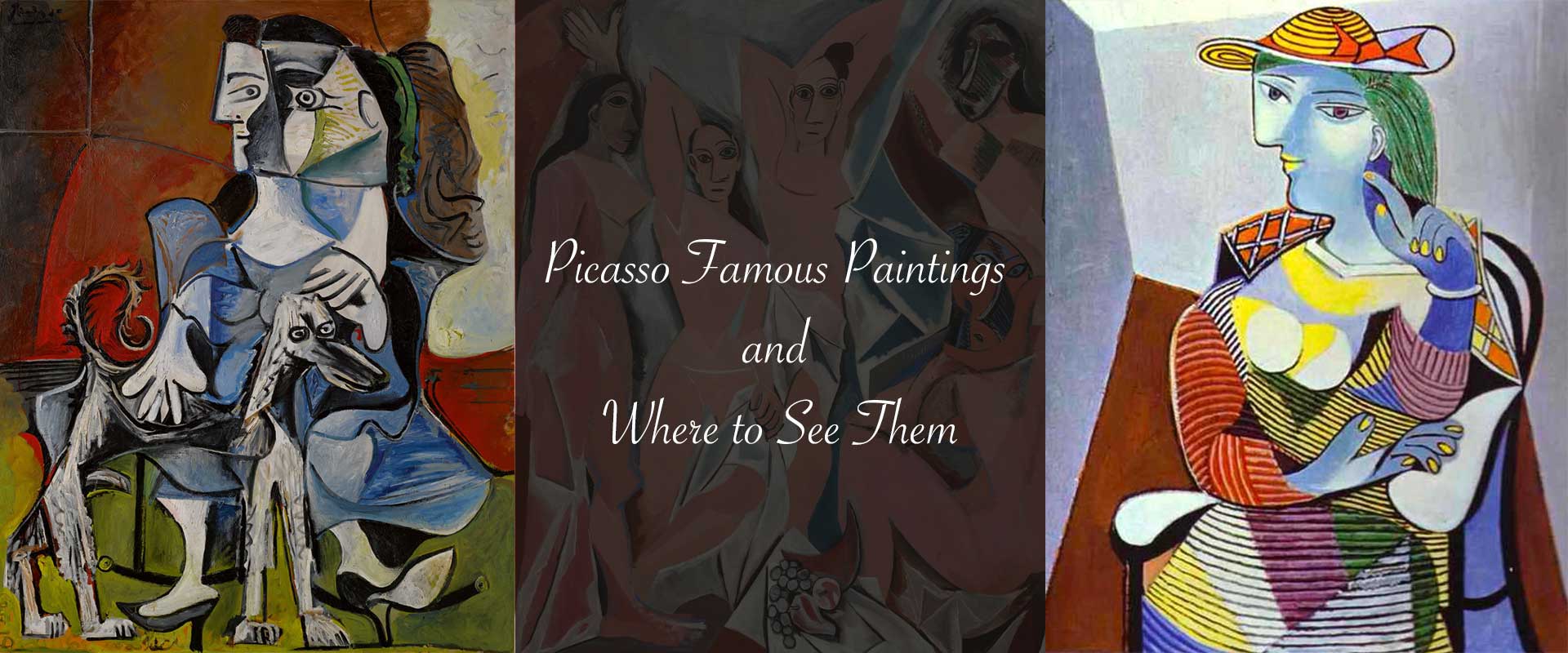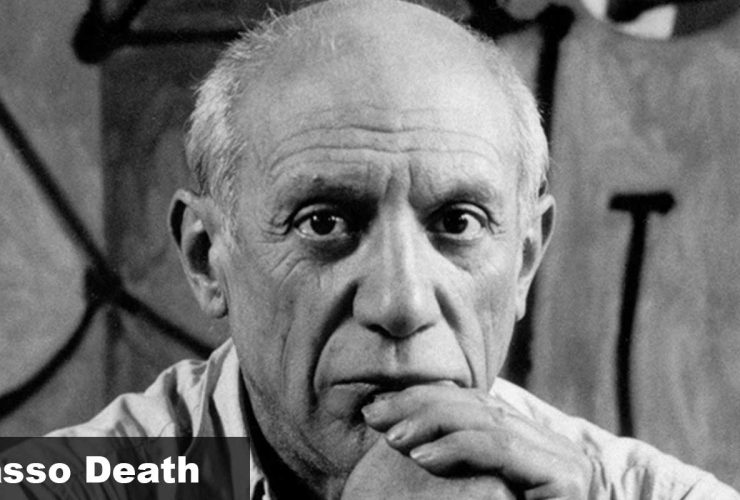Pablo Picasso remains one of the most celebrated artists in history, famous not only for his revolutionary style but also for his incredible versatility. From the sorrowful tones of the Blue Period to the fragmented faces of Cubism and the powerful political messages of his later years, his works have captivated audiences for over a century. If you’re wondering about the Picasso famous paintings and where to see them, this guide takes you through his most iconic masterpieces and the museums that house them today.
Exploring these works in person is one of the best ways to appreciate Picasso’s genius. Each brushstroke, each line, and each burst of color tells part of the story of modern art itself.
Les Demoiselles d’Avignon (1907) – Museum of Modern Art, New York
Often hailed as the painting that launched Cubism, Les Demoiselles d’Avignon is one of Picasso’s most daring works. The canvas portrays five women with fragmented bodies and mask-like faces, inspired by African and Iberian art. Its bold rejection of traditional perspective shocked audiences when it was first revealed.
- Museum: Museum of Modern Art (MoMA), New York
- Why See It: Considered the foundation of modern art, this painting is essential to understanding Picasso’s radical vision.
Guernica (1937) – Museo Reina Sofía, Madrid
Perhaps the most famous painting by Picasso, Guernica is a monumental anti-war masterpiece. Created in response to the bombing of Guernica during the Spanish Civil War, it uses black, white, and grey to portray the suffering of civilians and the chaos of violence.
- Museum: Museo Reina Sofía, Madrid
- Why See It: The scale and intensity of Guernica cannot be fully appreciated in photographs—it is an overwhelming experience in person.
For a deeper understanding of its symbolism, explore our article on Guernica by Pablo Picasso: The Meaning Behind the Masterpiece.
The Old Guitarist (1903–1904) – Art Institute of Chicago
Painted during Picasso’s Blue Period, The Old Guitarist depicts a frail blind man clutching his guitar. Dominated by blue tones, it expresses sorrow and human fragility.
- Museum: Art Institute of Chicago
- Why See It: A powerful reflection of Picasso’s empathy and emotional depth during one of his most introspective periods.
Girl Before a Mirror (1932) – Museum of Modern Art, New York
One of Picasso’s most famous portraits of his muse Marie-Thérèse Walter, Girl Before a Mirror combines bright colors with distorted reflections, symbolizing themes of youth, beauty, and mortality.
- Museum: Museum of Modern Art (MoMA), New York
- Why See It: It’s a striking example of Picasso’s blend of surrealism and emotional intensity.
Three Musicians (1921) – Museum of Modern Art, New York & Philadelphia Museum of Art
Three Musicians is a joyful Cubist masterpiece showing a harlequin, a monk, and a Pierrot in vibrant, overlapping planes. Two versions of the painting exist, housed in different museums.
- Museum: MoMA, New York & Philadelphia Museum of Art
- Why See It: A celebration of creativity, companionship, and Cubist innovation.
La Vie (1903) – Cleveland Museum of Art
This deeply symbolic Blue Period painting depicts a couple, a child, and a cloaked woman, interpreted as an allegory of life, death, and love.
- Museum: Cleveland Museum of Art
- Why See It: It offers a haunting look at Picasso’s grief after the death of his close friend Carlos Casagemas.
Nude, Green Leaves and Bust (1932) – Private Collection
One of Picasso’s sensual portraits of Marie-Thérèse Walter, Nude, Green Leaves and Bust achieved record-breaking auction prices. It captures Picasso’s passion during this period.
- Museum: Private collection (occasionally on loan)
- Why See It: Its sensuality and bold forms make it one of Picasso’s most memorable works.
Portrait of Dora Maar (1937) – Musée Picasso, Paris
This intense portrait of Dora Maar, Picasso’s lover and fellow artist, reveals the emotional tension in their relationship through bold distortions and colors.
- Museum: Musée Picasso, Paris
- Why See It: It’s both a psychological portrait and a document of Picasso’s turbulent personal life.
La Rêve (1932) – Private Collection
Meaning “The Dream,” this colorful and erotic painting of Marie-Thérèse Walter remains one of Picasso’s most famous.
- Museum: Private collection (has appeared in exhibitions)
- Why See It: Its dreamlike quality and simplified curves exemplify Picasso’s mastery of intimacy and abstraction.
Comparison Table: Picasso Famous Paintings and Locations
| Painting | Year | Location | Why Visit |
|---|---|---|---|
| Les Demoiselles d’Avignon | 1907 | MoMA, New York | Birth of Cubism |
| Guernica | 1937 | Museo Reina Sofía, Madrid | Monumental anti-war work |
| The Old Guitarist | 1903 | Art Institute of Chicago | Blue Period masterpiece |
| Girl Before a Mirror | 1932 | MoMA, New York | Surreal, symbolic portrait |
| Three Musicians | 1921 | MoMA & Philadelphia Museum | Celebratory Cubist painting |
| La Vie | 1903 | Cleveland Museum of Art | Blue Period allegory |
| Nude, Green Leaves and Bust | 1932 | Private Collection | Record-breaking sensual portrait |
| Portrait of Dora Maar | 1937 | Musée Picasso, Paris | Psychological depth |
| La Rêve | 1932 | Private Collection | Dreamlike intimacy |
Why See Picasso’s Paintings in Person?
Seeing Picasso’s paintings in person is an entirely different experience than viewing them online or in books. Museums allow you to appreciate:
- Scale and impact: Works like Guernica overwhelm with their size and detail.
- Texture and technique: Brushstrokes, layering, and materials reveal his process.
- Context: Exhibitions often place his works alongside related pieces, deepening your understanding of his creative evolution.
If you want to bring some of this genius into your own space, explore our Pablo Picasso Wall Art Prints collection and discover timeless reproductions of his masterpieces.
Conclusion
From New York to Madrid, Paris to Chicago, Picasso’s most famous paintings are housed in some of the world’s greatest museums. Each one tells a different story—whether it’s the sorrow of the Blue Period, the radical invention of Cubism, or the political fury of Guernica. Knowing where to see them enriches not only your travel plans but also your appreciation of modern art.
To deepen your knowledge of his styles and innovations, check out Picasso Art Styles: From Blue Period to Cubism for a closer look at the phases that shaped his career.
FAQs About Picasso Famous Paintings
What is Picasso’s most famous painting?
Guernica is often considered Picasso’s most famous work due to its global impact as a political and cultural symbol.
Where can I see Les Demoiselles d’Avignon?
It is displayed at the Museum of Modern Art (MoMA) in New York City.
Which Picasso paintings are in Spain?
Spain is home to Guernica at the Museo Reina Sofía in Madrid, and many other works at the Museo Picasso in Barcelona and Málaga.
Are Picasso’s Blue Period works on display?
Yes, notable Blue Period works such as The Old Guitarist are displayed at the Art Institute of Chicago and La Vie at the Cleveland Museum of Art.
Can I view Picasso paintings in Paris?
Yes, the Musée Picasso in Paris holds an extensive collection, including his portraits of Dora Maar and numerous drawings and studies.





